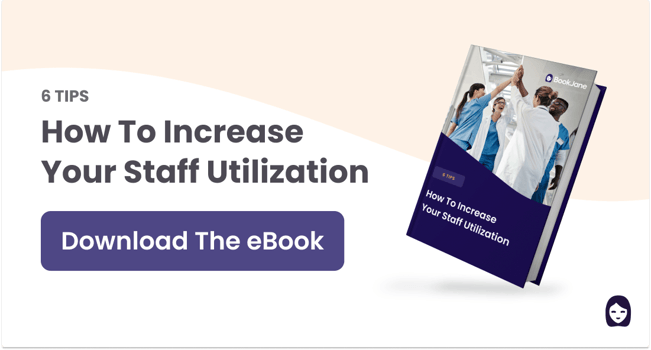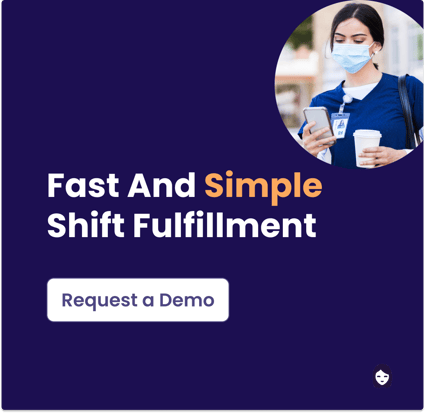
Manual or technological: Which type of scheduling is best for you?
In today’s busy world, everyone needs a schedule to stay on top of their responsibilities. This is especially true for organizations like long-term care homes and hospitals, where the rapidly changing needs of patients and residents must be met by appropriate levels of staff. Shift fulfillment has become even more complicated in the wake of the 5th wave of COVID-19, Omicron. As medical needs mount, the balance between providing care and preventing employee burnout becomes increasingly precarious.
Until recently, spreadsheets and manual calling/emailing were the mainstay of scheduling and shift fulfillment. As a way to present information, a manually created spreadsheet is a thoroughly acceptable option. But when it comes to the intricate and constantly changing nature of staff schedules, there may be a better option: a technologically automated solution.
Keep current
When it comes to patient care, the need for clear and well-organized staff scheduling has never been more pressing. Workers in the field have been pushed to their limits in the last two years. No matter how carefully a schedule is planned, adjustments will inevitably have to be made. With manual scheduling, it is much more difficult to keep up to date -- especially when a large staff is involved.
Coordinating shift fulfillment across multiple departments and locations requires immensely complicated and rapidly changing spreadsheets, all of which would then have to be pushed out to employees. A technology solution, on the other hand, makes those changes automatically. The speed and visibility of the process provides an opportunity to enhance staffing strategies and long term plans.
Save time
One of the most common complaints about manual staff scheduling is how much time it takes. The cumulative administrative burden is both daunting and draining. Managers and supervisors can spend up to 25% of their time creating and adjusting schedules, time that would be better spent on other duties. And when eleventh hour substitutions occur, they’re often scrambling to make phone calls, texts and send emails to ensure shift fulfillment.
Creating schedules with technology is a much faster process. Any schedule can be saved as a template and repopulated in seconds. More importantly, shift callouts occur automatically. This means open shifts are filled much more quickly, thus freeing managers and supervisors to spend their time and energy where most needed.
Eliminate errors
The more changes are made to staff schedules, the more likely errors are to appear. Manually created spreadsheets are prone to human error. One small mistake, noticed and corrected, might not be a problem. But when spreadsheets are used to collect information to export for other purposes, any small error will be magnified, and spread to every iteration that follows.
Modern schedules require a lot of flexibility. Employees are at-risk and in high demand, and last-minute changes to ensure shift fulfillment will be required. When juggling their own care responsibilities as well as the administrative load of staff scheduling, heavily pressed managers and supervisors are less likely to catch errors such as typos, skipped fields, or copy and paste errors. This could lead to lapses like double-bookings, or crises like empty shifts.
A technological solution, however, will not overlook such errors. Nor will it allow critical unfulfilled or double-booked shifts to pass without flagging. The features built into staff scheduling platforms can go a step further: when a shift is suddenly made vacant, the platform can automatically notify all qualified staff. Such advanced functionality is far beyond the ability of a spreadsheet.
Keep track
A spreadsheet schedule is only as good as the data it contains. When dealing with a large staff, or numerous departments with diverse staffing needs, or multiple locations all requiring concurrent shifts, a manual spreadsheet must shrink all extraneous fields in order to prioritize shift fulfillment. This can lead to complications when it comes to tracking seniority or credentials.
Using a technology platform to create schedules bypasses those complications. Not only can technology track staff seniority, but it can also guarantee that only appropriately credentialed workers will be called out for shifts. Even better, technology can send automatic reminders to workers when their credentials need to be renewed. That’s good for everyone: workers, patients, and management.
Manual spreadsheets can be useful. But when it comes to creating and maintaining complex staff schedules, a technological solution, like BookJane J360 Workforce, is likely to be the better choice. Enhance your staff scheduling process and strategy with fast, flexible technological scheduling.
Click below to request a demo and discover if J360 Workforce is right for your facility.






